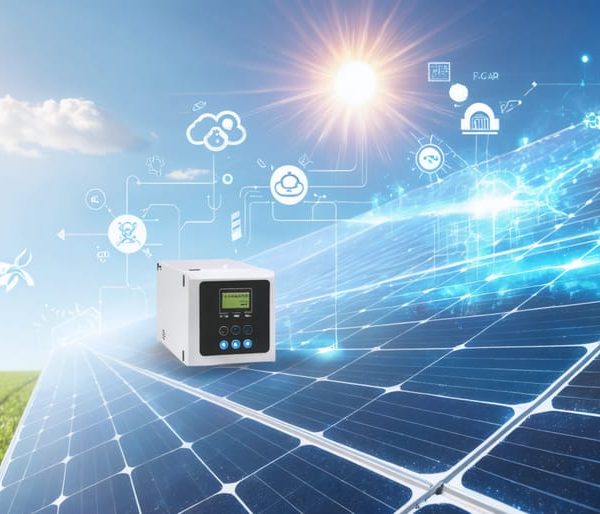How to Shield Your Solar Installation When Hurricanes Strike
Secure your home and solar investment against hurricane threats with a comprehensive emergency response plan that starts months before storm season. Map evacuation routes, establish a communication chain with your solar installer’s emergency response team, and create a documented checklist of critical shutdown procedures for your solar system. Modern solar installations can withstand significant wind forces, but proper preparation transforms a potential disaster into a manageable challenge.
Store essential supplies, including waterproof tarps, emergency power banks, and detailed system documentation, in a readily accessible location. Photograph your entire solar installation from multiple angles to support potential insurance claims, and maintain digital copies of all warranty information, installation specs, and emergency contacts in a cloud-based storage system.
Time-sensitive decisions during a hurricane warning become significantly easier with a well-structured response plan. This guide provides step-by-step protocols for securing your solar investment, protecting your family, and ensuring rapid system recovery after the storm passes.

Pre-Hurricane Season Preparation
System Documentation and Inventory
Maintaining detailed documentation of your solar system is crucial for both emergency preparedness and insurance purposes. Start by creating a comprehensive inventory that includes make, model, and serial numbers of all major components – panels, inverters, batteries, and mounting hardware. Take clear, high-resolution photos of your entire installation from multiple angles, including close-ups of individual components and wide shots showing the overall layout.
Store digital copies of purchase receipts, warranties, and installation documents in a cloud-based service for easy access during emergencies. Print physical copies and keep them in a waterproof container along with your emergency kit. Create a simple diagram showing the location of crucial components like shut-off switches and emergency disconnects.
Document your system’s typical performance metrics, including average daily production and consumption patterns. This information can help assess damage and verify proper system restoration after a hurricane. Update your inventory annually and after any system modifications. Consider recording a video walkthrough of your system’s operation and maintenance procedures as a backup reference.
Remember to share this documentation with family members or property managers who might need to access it during an emergency.
Maintenance and Inspection Checklist
Regular maintenance and inspection procedures are crucial for hurricane preparedness. Complete these essential checks at least twice during hurricane season:
✓ Inspect mounting systems and tighten all bolts and clamps
✓ Check for loose or damaged panels
✓ Verify weatherproofing seals are intact
✓ Test backup batteries and inverter systems
✓ Clear debris from drainage channels
✓ Document system condition with photos
✓ Update emergency contact information
✓ Review insurance coverage details
Create a maintenance calendar and keep detailed records of all inspections. Pay special attention to:
– Panel attachment points
– Electrical connections and wiring
– Structural integrity of roof mounting
– Battery system performance
– Emergency shutdown mechanisms
Schedule professional inspections annually, preferably before hurricane season begins. Consider upgrading older mounting systems to newer, hurricane-rated options if needed. Keep spare parts and emergency supplies readily available, including weatherproof covers and temporary support materials.
Remember to test your emergency shutdown procedure regularly and ensure all family members or facility staff know how to activate it safely.
Hurricane Watch Response Protocol
System Shutdown Procedures
When a hurricane is approaching, following proper solar safety precautions during system shutdown is crucial for protecting your investment and ensuring everyone’s safety. Here’s how to properly power down your solar installation:
1. Monitor weather alerts and begin shutdown procedures at least 24 hours before the hurricane’s expected arrival.
2. Access your system’s main control panel and activate “storm mode” if available.
3. Disconnect the AC breaker first, followed by the DC disconnect switch. This sequence prevents any power backfeed.
4. Document meter readings and take photos of the system for insurance purposes.
5. If your system has microinverters, turn off the dedicated circuit breaker in your main electrical panel.
6. Secure any loose monitoring equipment or cables that could become projectiles.
7. For battery backup systems:
– Power down the battery management system
– Ensure batteries are fully charged for emergency power
– Disconnect battery banks if flooding is possible
8. Log all shutdown actions in your maintenance records.
9. Place weather-resistant covers on exposed components if time permits.
Remember to never attempt shutdown procedures during active storm conditions. If you’re unsure about any steps, contact your solar installer or maintenance provider for guidance.

Emergency Contact List
Create a comprehensive emergency contact list and store it in multiple easily accessible locations, including your phone, emergency kit, and cloud storage. Include these essential contacts:
Local Emergency Services:
– Your area’s emergency management office
– Local police department (non-emergency number)
– Nearest hospital and urgent care facilities
– Local utility companies
– Local meteorological station
Personal Contacts:
– Family members and close friends
– Neighbors who can help during emergencies
– Your insurance agent
– Primary care physician
– Veterinarian (if you have pets)
Solar System Contacts:
– Your solar installation company
– System maintenance provider
– Battery backup system manufacturer
– Inverter manufacturer’s support line
Update this list every six months to ensure all information remains current. Create laminated copies to keep in waterproof containers, and share digital versions with trusted family members. Consider creating a group chat or emergency communication channel with key contacts for quick access during emergencies.
Remember to include alternate contact methods when possible, as traditional phone services might be disrupted during severe weather events.
During the Hurricane
When the hurricane arrives, stay vigilant and follow these critical safety measures to protect yourself and monitor the situation. Remain in your designated safe room, away from windows and exterior doors. Keep your emergency radio on and monitor official weather updates and emergency broadcasts for real-time information about the storm’s progression.
If you have a backup generator, ensure it’s running in a well-ventilated area outside, never indoors or in an enclosed space. Use battery-powered lights instead of candles to avoid fire hazards. Keep your cell phone charged and limit usage to essential communications to preserve battery life.
Monitor your home for signs of water intrusion or structural damage. If you notice water entering your home, move to a higher level if possible, but never enter a flooded area. Keep track of any damage you observe for insurance purposes, but only if it’s safe to do so.
Pay attention to changes in wind intensity and direction, as these could indicate the hurricane’s eye passing over. Don’t be fooled by the calm of the eye – stay inside until officials confirm it’s safe to venture out. If your roof begins making cracking sounds or you hear unusual noises, move to the lowest level of your home immediately.
Continue to check on family members and pets throughout the storm. Keep everyone together in the safe room and maintain a calm environment, especially if there are children present. Have activities ready to keep everyone occupied and distracted from the storm’s intensity.
Remember, your safety is paramount. Even if you notice damage to your property, wait until the all-clear signal before attempting any assessments or repairs.
Post-Hurricane Recovery

Damage Assessment Protocol
Once the hurricane has passed and it’s safe to venture outside, follow a systematic approach to assess any damage to your solar system. Start with a visual inspection from ground level, using binoculars if necessary, to check for obvious signs of damage like loose panels, debris impact, or damaged mounting hardware.
Document everything you observe with photos and detailed notes – this will be invaluable for insurance claims. Pay special attention to the mounting system, looking for any signs of water infiltration or compromised seals around roof attachments.
Check your system’s monitoring data to compare pre and post-storm performance. Any significant drops in energy production could indicate hidden damage. Look for error messages or unusual readings from your inverter.
Create a detailed damage report including:
– Visible physical damage
– Performance data comparisons
– Location of problem areas
– Timestamp of observations
– Weather conditions during assessment
Don’t attempt repairs yourself – contact your solar installer or a certified professional for a thorough inspection and necessary repairs. They have the expertise and safety equipment to properly evaluate and fix any hurricane-related damage while maintaining warranty coverage.
Safe System Restart
After the hurricane has passed and local authorities have given the all-clear, follow these system restart procedures to safely reactivate your solar installation. First, conduct a thorough visual inspection of all components for visible damage, including panels, mounting hardware, and wiring. Check for debris, loose connections, or water infiltration.
Before powering up, ensure all panels and electrical connections are completely dry. Test the mounting system’s stability and verify that no panels have shifted during the storm. If you spot any damage, document it with photos for insurance purposes and contact a certified solar technician.
When everything appears secure, restart your system gradually. Begin by turning on the AC disconnect, followed by the DC disconnect, and finally the inverter. Monitor the system’s performance through your monitoring app or display panel for at least an hour to ensure normal operation. If you notice any unusual behavior, such as error messages or reduced power output, immediately shut down the system and contact your solar provider for professional assistance.
Remember, safety comes first – if you’re unsure about any step, don’t hesitate to call a professional.
Preparing for hurricanes is not just about having a plan – it’s about protecting your family, home, and investments. Throughout this guide, we’ve covered essential steps from creating an emergency kit to securing your solar installation and establishing clear evacuation routes. Remember that the key to hurricane preparedness lies in taking action before the storm arrives.
By maintaining an updated emergency contact list, regularly checking weather alerts, and keeping your essential documents readily accessible, you’ll be better positioned to handle any hurricane emergency. The safety measures we’ve discussed for your solar installation will help preserve your renewable energy investment while ensuring your family stays protected during severe weather events.
Don’t wait until a hurricane warning is issued to start preparing. Make hurricane preparedness a regular part of your home maintenance routine, especially during hurricane season. Review and update your emergency response plan at least twice a year, and ensure all family members understand their roles and responsibilities.
Your proactive approach to hurricane preparedness today could make all the difference when facing tomorrow’s storms. Stay safe, stay prepared, and remember that thorough planning is your best defense against hurricane emergencies.











